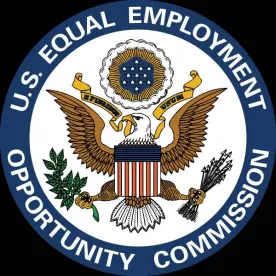There was an update meeting with the Equal Employment Opportunity Commission’s (EEOC) Miami leadership on June 16, 2017. Mike Farrell is the EEOC Miami District Director, and Bob Weisberg is the EEOC Regional Attorney who heads up litigation for the District. Both spoke about recent trends that will be of interest to Human Resources professionals, in-house counsel, and practitioners. We digest their observations and pass on our own insights in this article.
Predictions
In light of the relatively new presidential administration, employers are wondering whether and how the EEOC and its processes will change. Here are some predictions that the speakers offered– none of these have obviously come true yet, but stay tuned to our blog for future updates on these topics.
- The EEOC’s Acting Chair Victoria Lipnic has made clear she will make changes – but nothing “major.” The biggest unknowns at the Agency are who will fill the two empty Republican chairs – and help direct policy for the next four years; and who will become General Counsel – and direct which litigation the EEOC chooses to file or not file.
- The EEOC already collects data such as race and gender of employees on the form EEO-1. Last year the Obama administration announced that the EEOC will start collecting pay data on the form starting with the 2017 report. Good news prediction is that the EEOC will reverse course and not require pay data reporting.
- A merger of the EEOC and the Office of Federal Contract Compliance Programs (OFCCP), as the White House wants? This topic is not a new one, but it is “more real” now with the current Department of Labor. There are tremendous hurdles, nonetheless, so the chance of success remains uncertain. If the merger occurs, the EEOC will become the “receiving agency” and OFCCP offices would close.
- Litigation priorities will continue to focus the EEOC’s limited resources on areas of greatest impact, including:
- immigrants/migrant workers (and as the EEOC speakers noted, Title VII covers undocumented workers);
- inflexible leave policies under the Americans with Disabilities Act (ADA);
- employer relationships with staffing companies; with a particular review of the “on demand” economy with its temporary employees and independent contractors;
- pay disparity, in gender and also in other protected areas; and
- employer policies that dissuade exercising rights with the EEOC.
- While the EEOC’s current position is that “sex” discrimination includes sexual orientation or gender identity, it was predicted that the “ship has sailed” on the arguments against this position in light of recent a Seventh Circuit ruling and an upcoming Second Circuit review. It will be up to the Supreme Court to ultimately decide.
Practical Tips
The EEOC speakers also provided a number of recommendations, aimed at dealing with the nuts and bolts of responding to EEOC charges and dealing with the Agency. Following are some key points:
- Remember that as of 2016, the EEOC has been sharing all written position statements that employers submit with the charging party. In other words, if you do not want the employee or their attorney to see certain information, think twice before including it in your position statement. If an employer wishes for the EEOC to keep certain attachments (such as medical information, social security numbers, or confidential business or trade secret information) confidential, make sure to follow specific EEOC guidance to do so.
- The EEOC is gathering contact names and email addresses for employers so that they can send charges directly to a preferred contact person. You can contact your district office to provide this information in order to ensure accurate receipt of charges.
- If you receive a charge and a notice that it is not eligible for alternative dispute resolution (ADR), it may be because the charge falls into one of these categories: 1) claims of a discriminatory employment policy that affects many employees, 2) claims of harassment against many employees, 3) claims with egregious allegations, such as a hangman’s noose in the workplace. The EEOC will direct their resources to investigating and processing such charges.
- Employers should remember that Plaintiff-side attorneys often make Freedom of Information Act (FOIA) requests for the EEOC file in the time period between the Charging Party receiving a Right to Sue notice and the 90-day deadline for filing suit. The lawyers often then look at the employer’s position statement to see if it is truly a case they want to file. Therefore, it is important to remember that the position statement is a tool to educate not only the EEOC but also opposing counsel.
- The EEOC periodically issues Enforcement Guidance on various topics for the laws it covers. For example, in 2016, the Agency issued Guidance on national origin and retaliation. They contain numerous fact patterns that can come in handy in dealing with certain employee situations, and in writing a position statement. Citing to them is particularly effective with EEOC investigators.
- And finally, do not cite to the McDonnell-Douglas burden-shifting standard in your position statements. Everyone at the EEOC already knows it!




 />i
/>i

